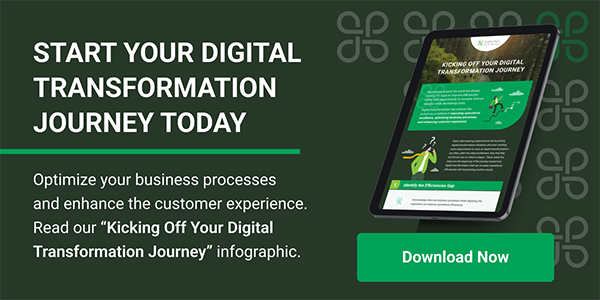The acceleration of digital transformation relies heavily on business-based automation. Companies are prioritizing initiatives that improve customer experiences while enabling them to market at scale, build more resilient supply chains, and more.
But what about your Information Technology team?
With more demand for automation, your IT team takes on more strain. To alleviate that strain and ensure IT actually receives the support it needs, organizations are refocusing efforts on IT process automation.
What does IT process automation include? And why should your business adopt it?
What Is IT Process Automation?
IT process automation, or ITPA, describes the automation of IT services, support, and administration into workflows that eliminate manual management. It covers a wide range of processes and works. Its goal is to eliminate repetitive tasks and break down the silos often present in IT operations. This group of activities is likely the cause of bottlenecks, restricting productivity and smoother operations.
Organizations realize the value of ITPA; 47 percent said it was a top priority for IT spending when asked what they’ll invest in to improve IT operations and service delivery.
Despite organizations’ desire to invest in ITPA to modernize IT as well as other business lines, challenges are inherent. They often fall into the categories of the breadth of IT’s reach, such as managing both physical and virtual assets, disparate tools, and other network intricacies. It’s not a simple initiative to take on, but it is well worth the effort.
You should apply ITPA strategically to ideal use cases that deliver benefits that move the needle toward greater productivity and better outcomes.
What Can You Do with IT Process Automation, and What Are the Benefits?
Where can ITPA make the most difference? It is critical to think about its application as a long-term optimization of processes, not a quick one-off to fix a specific problem. You’re seeking to permanently redefine processes that are often complex.
In most situations, ITPA use cases are most suitable for:
- High-volume transactions
- Tasks that need little human intervention but are not fully automated
- Processes you can break down into smaller specific tasks
- Error-prone workflows
- Workflows that span across nonintegrated platforms or teams
- Tasks that reside in a stable environment
Some examples of these include:
- Managing support tickets: Automation can receive, organize, and tag these tickets, creating a better workflow for IT help desk agents. A reduction in manual data entry means they can be more productive.
- Asset management: ITPA tools can manage your pool of assets, continuously monitor them, and update them when necessary. In turn, you have visibility into all assets and their performance. Operating in this way can result in fewer costs and better security.
- Job scheduling: In IT, processes trigger other processes. However, there can be confusion about what task to perform when. By automating job scheduling, you remove the ambiguity. With automation, you can schedule jobs dynamically. For example, by automating file transfers, you’ll save time and be able to forecast IT workloads more accurately to prevent latency.
- Security and compliance: When you insert automatic compliance controls into workflows, you can automate data collection and structuring. That data then provides you with intelligence regarding internal processes. Automation tools can deliver reporting, timestamping, and other compliance-related requirements.
- Provisioning and deprovisioning users: In landscapes where there are decentralized and SSO services in place it can be burdensome to onboard, update and offboard access in a controlled matter. Automation tools can help solve this and log it to be audit ready.
Improving ITPA: What Does Success Look Like?
The first step in improving ITPA is creating a Center of Excellence (CoE) that focuses on improving and automating IT processes. The CoE will document all processes and organize them. After analysis, the CoE identifies opportunities for automation. Then it’s time to execute these with ITPA leveraging robotic process automation (RPA).
ITPA and RPA aren’t the same. RPA applies to a broad set of business processes, whereas ITPA involves automating IT operational tasks. RPA becomes a “digital” worker in executing automation, and when you merge it with ITPA and machine learning, you have hyperautomation.
RPA can then enhance IPTA. ITPA relies on machine learning to do high-level work like analyzing data. RPA can supplement those analytics to improve the entire automation landscape. When machine learning enters the automation zone, you’ll be able to adapt quickly, scale effectively, and continue to extend your scope.
As a result, you gain greater efficiency in the execution of tasks, derive greater value from technology investments, increase your ability to accelerate more complex automation, and enable IT professionals to concentrate on more skilled work. IT processes become more streamlined, helping you obtain operational excellence.
Better IPTA Results Start with Digital Transformation
To achieve better IPTA results for your company, you know that digital transformation is key. It’s a long journey, but one that’s worth the work. It requires developing a strategy and plan for IPTA deployment. That can seem intimidating, so we’ve put together a resource that breaks it down.
Learn more by downloading our infographic, “Kicking Off Your Digital Transformation Journey.”



